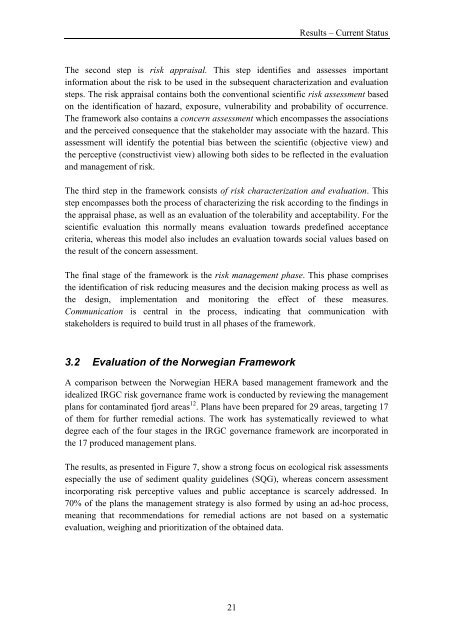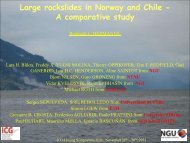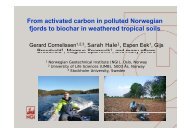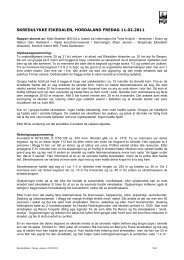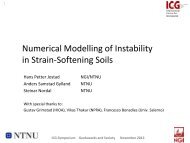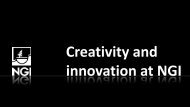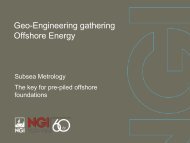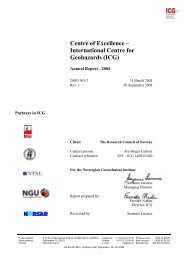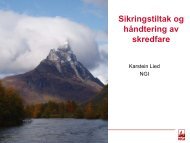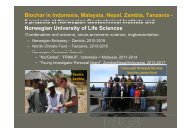fulltext - DiVA
fulltext - DiVA
fulltext - DiVA
You also want an ePaper? Increase the reach of your titles
YUMPU automatically turns print PDFs into web optimized ePapers that Google loves.
Results – Current StatusThe second step is risk appraisal. This step identifies and assesses importantinformation about the risk to be used in the subsequent characterization and evaluationsteps. The risk appraisal contains both the conventional scientific risk assessment basedon the identification of hazard, exposure, vulnerability and probability of occurrence.The framework also contains a concern assessment which encompasses the associationsand the perceived consequence that the stakeholder may associate with the hazard. Thisassessment will identify the potential bias between the scientific (objective view) andthe perceptive (constructivist view) allowing both sides to be reflected in the evaluationand management of risk.The third step in the framework consists of risk characterization and evaluation. Thisstep encompasses both the process of characterizing the risk according to the findings inthe appraisal phase, as well as an evaluation of the tolerability and acceptability. For thescientific evaluation this normally means evaluation towards predefined acceptancecriteria, whereas this model also includes an evaluation towards social values based onthe result of the concern assessment.The final stage of the framework is the risk management phase. This phase comprisesthe identification of risk reducing measures and the decision making process as well asthe design, implementation and monitoring the effect of these measures.Communication is central in the process, indicating that communication withstakeholders is required to build trust in all phases of the framework.3.2 Evaluation of the Norwegian FrameworkA comparison between the Norwegian HERA based management framework and theidealized IRGC risk governance frame work is conducted by reviewing the managementplans for contaminated fjord areas 12 . Plans have been prepared for 29 areas, targeting 17of them for further remedial actions. The work has systematically reviewed to whatdegree each of the four stages in the IRGC governance framework are incorporated inthe 17 produced management plans.The results, as presented in Figure 7, show a strong focus on ecological risk assessmentsespecially the use of sediment quality guidelines (SQG), whereas concern assessmentincorporating risk perceptive values and public acceptance is scarcely addressed. In70% of the plans the management strategy is also formed by using an ad-hoc process,meaning that recommendations for remedial actions are not based on a systematicevaluation, weighing and prioritization of the obtained data.21


